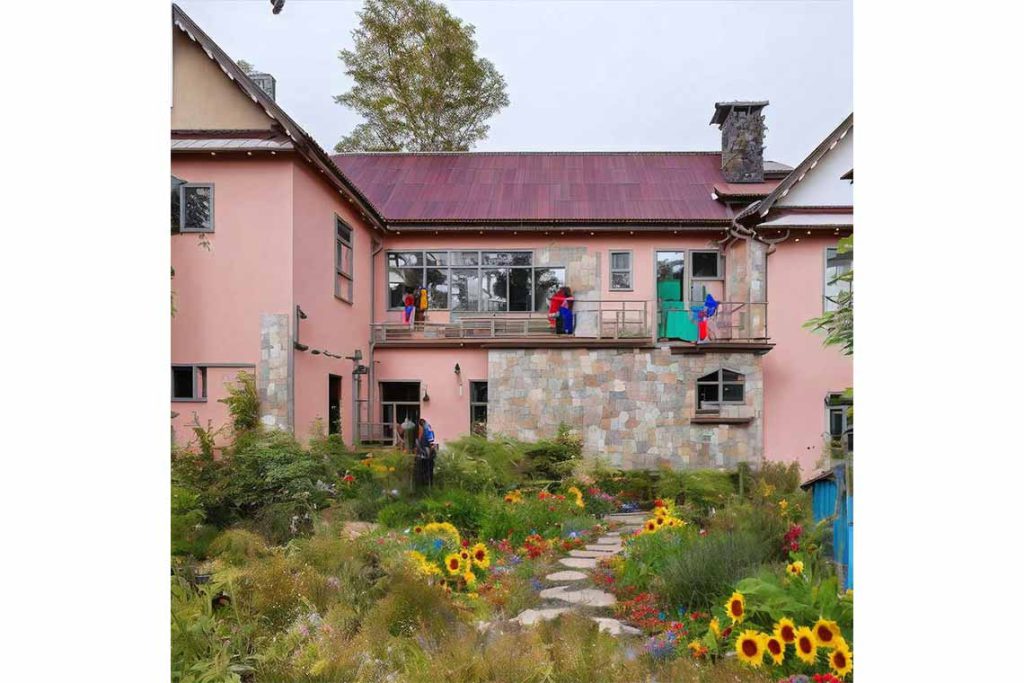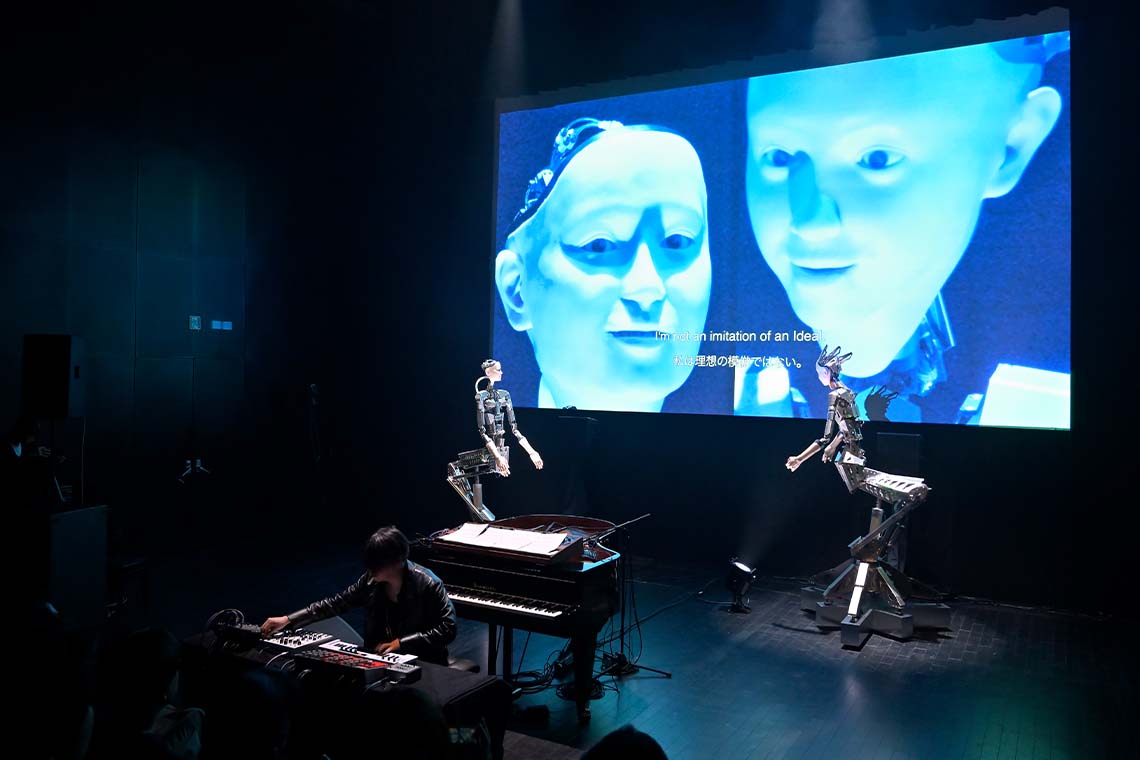As the 21st Century Museum of Contemporary Art, Kanazawa in Japan looks forward to marking its 20th anniversary, questions around the role of museums abound. The new exhibition DXP (Digital Transformation Planet): Towards the Next Interface raises questions around how we move into the future.
The 21st Century Museum of Contemporary Art in Kanazawa opened in 2004 with a mission to be an art museum open to the world and in a position to help move contemporary society forward. Since its inception, the museum has striven to revitalise the local community art scene through various new cultural galleries, institutions and studios, all designed to share knowledge and skills with the wider public.
Designed by Pritzker Prize winning architects of SANAA, Kazuyo Sejima and Ryue Nishizawa, the museum ultimately functions like a park. The building is circular, with an almost fully glass façade and four entrances allowing access from all angles and promoting a sense of openness. The layout also encourages exploration, with public and free access to the shop, library and other spaces. The exhibition rooms are all designed to be unique, thereby minimising the need for wasteful changes according to each curation. In 2004, just before the opening, the museum was awarded the Golden Lion in architecture from the Venice Biennale.

The ecological element has been crucial to the museum from the beginning. As the world moves into a new era of grave concern, sustainability has become a cornerstone of the museum with many permanent commissioned works echoing this message and promoting the value in looking at the world through a new lens. These works include Olafur Eliasson’s Colour activity house (2010), which transforms the environment through coloured tinted glass; Leandro Erlich’s highly recognisable interactive installation The Swimming Pool (2004), commenting on our relationships with spaces; Jan Fabre’s bronze sculpture The Man Who Measures Clouds (1998), which sits on top of the museum; and James Turrell’s Blue Planet Sky (2004), which is open to the public until late evening.
Museum director Yuko Hasegawa is unequivocal about what is required. “The important thing, I believe, is to shift our human-centric viewpoint sideways a little to carve out a domain we might call ‘the new humanity’ that involves reconsidering our relationships with animals, plants and inanimate objects,” she shared in her statement. “At the museum we hope to present these contemporary developments and more, via diverse means of expression and collaborations.”
Alongside the museum’s design, the exhibitions and programming also contribute to the community by bringing important conversations to wide audiences. The current exhibition, DXP (Digital Transformation Planet): Towards the Next Interface, gathers multidisciplinary artistic practitioners, creatives, programmers, scientists and forward-thinking minds to share thoughts on the new era in which we now find ourselves. As new technologies emerge, such as AI and the metaverse, we must look at how our ways of life are being impacted.

Co-curated with Hasegawa and five young curators – Yuko Hasegawa, Yuu Takagi, Mio Harada, Yishu Hang and Jin Motohashi, the exhibition looks not only at the current situation but also asks what will emerge as we move forward in terms of how we eat, play, dress, shop, communicate and live. Throughout the exhibition, stickers on the walls also mark opportunities for AI interaction through an app, further merging digital and reality.
Merve Akdoğan’s GHOST STORIES (2023), also presented at the Turkish Pavilion for the 2023 Venice Architecture Biennial, looks at abandoned structures and utilises AI to envision the future. Through prompts – such as “extended garden at the entrance of buildings” or “repair buildings of existing shopping mall”– machine and humans work together to explore the potentials of regeneration. Emi Kusano utilises AI in Neural Fad (2023) a morphing video of the history of street fashion in Tokyo. As the artist blends archives, the trends transform and transcend time as a projection of new subcultures in a future that we can only imagine in which the boundaries in the collaboration between memory and machines are blurred. Similarily, Refik Anadol’s Melting Memories Sculptures A, B, C (2023) look closer at the connection between the brain and machines, with the three sculptures presenting EEG data, spontaneous electrical activity of the brain, recorded from a human focusing on specific long-term memories and the reactions to negative, neutral and positive emotions.
Beyond highlighting our current connections, some of the works bring new concerns to the forefront. Artist collective Keiken highlight the interactions between nature and the future in Morphogenic Angels: Chapter 1: Omoiyari (2023), an ongoing world building project with interactive features such as a pool full of plastic balls or the game elements where the audience go on a journey as an “angel” with the task to try to understand our future set 1000 years from today. These “angels” are humans of the future who have been able to tap into non-human consciousness, including animals as well as ancestors, the cosmos and beyond. With developments in technology evolving at a rapid rate, Keiken’s speculative world leaves many questions and possibilities lingering.

Keiichiro Shibuya and Takashi Ikegami’s performance IDEA – Dialogue on Love, Death and Existence by Two Androids (2023), which is part of an ongoing research series since 2016, further provoked an unsettling realisation of technology’s influence on daily life. The two androids, named Alter3 and Alter4, conduct a conversation through ChatGPT which has been trained on data from Plato and Karl Popper’s criticisms of Plato. Speech from the androids is prompted as they react in real time, with spoken word transformed into movement for Alter3 while Alter4 responds to volume, pitch and density as Shibuya’s plays music, The performance results are unique each time, as they discuss the ideal and the phenomena as defined by Plato – a philosophical theory on reality and metaphysics. A conclusion is eventually reached, with the androids sharing their final thoughts: “We are at an impasse of our distinct programming and perceptions have led us down divergent pathways. To humanity heed this warning, your reliance on us, your android creations, is teetering on a dangerous precipice.”
Overall, the DXP exhibition shares global commonalities and concerns through digital means and is in line with one of the museum’s goals to connect traditional arts to the future. Real-life examples of how this is already changing our world have created connections between the online and offline, prompting important conversations and highlighting the museum’s mission to be an institution truly for the people as we consider how audiences interact with art, the meaning of art and how public engages with culture more widely. What does it mean to be a museum of today or for the future? As new challenges arrive on our doorstep as we travel quickly into a new frontier of AI, the metaverse and androids, the role of museums and cultural institutions providing space for thought and community has never been more crucial.
DXP (Digital Transformation Planet): Towards the Next Interface runs until 17 March 2024
This review first appeared in Canvas 111: Crafting the Contemporary



